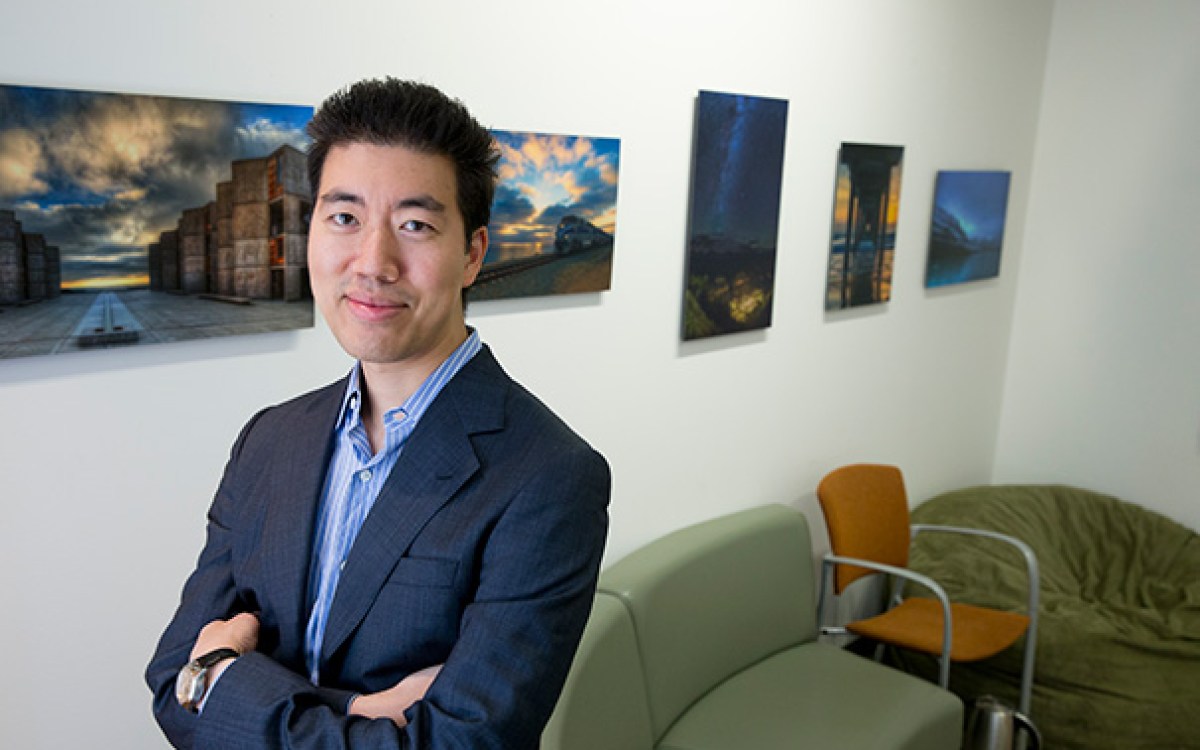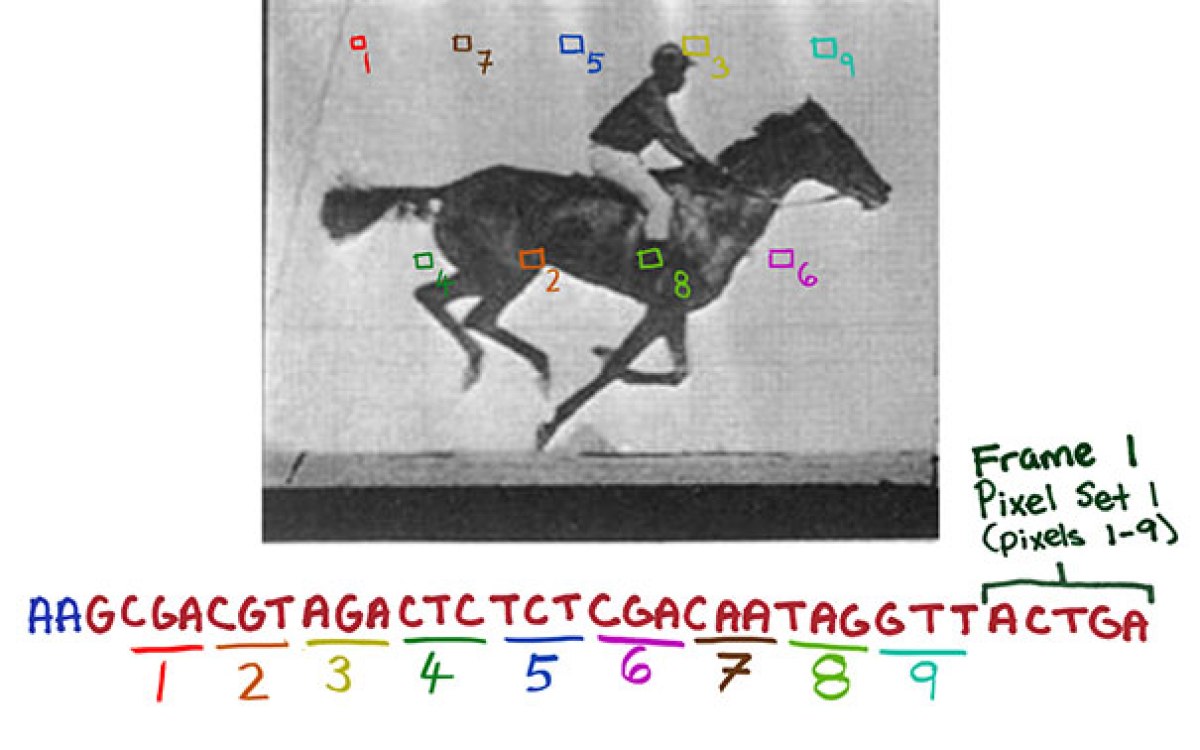
Jennifer Doudna, who first identified CRISPR/Cas9 as a gene-editing tool, delivered three lectures about the tool’s rapid spread and the need for discussion about the ethics of its applications.
Rose Lincoln/Harvard Staff Photographer
CRISPR’s breakthrough implications
Jennifer Doudna delivers Prather Lectures, explaining her gene-editing technology
More like this
Jennifer Doudna, the gene-editing pioneer whose breakthrough in CRISPR technology has taken the scientific world by storm, expressed surprise Tuesday evening at how fast the world’s scientists have put her findings to work, as well as concern that gene-editing technology could outpace ethical constraints on its use.
Doudna, who spoke at Harvard’s Science Center, explained the work that led to the development of CRISPR/Cas9 gene-editing technology, which was described in a paper in the journal Science in 2012.
A sign of how quickly the techniques would be adopted by her scientific colleagues came within months. By the end of that year, she said, seven papers already had been submitted for publication, describing work that used CRISPR/Cas9 to edit genomes in human cells, fungi, and whole zebrafish.
Doudna said she was recently asked to write an article reviewing the technology and its scientific use and searched a database of scientific publications. The search turned up 8,400 papers.
“It was really quite amazing how quickly it was possible to harness this technology once it was clear how it operated,” she said.
The CRISPR/Cas9 system occurs naturally in bacteria and gets its DNA-cutting abilities from its role as part of the bacterial immune system. Snippets of DNA from invading viruses are cut and stored in the bacterial genome as part of the CRISPR (Clustered Regularly Interspaced Short Palindromic Repeats) array. The Cas9 protein (short for CRISPR associated protein 9) uses those snippets to recognize future invaders and cuts their genetic material, killing them. The CRISPR/Cas9 array allows the bacteria to recognize future attacks and, because it becomes part of the bacterial genome, to pass that immunity on to its offspring.
Scientists were aware of CRISPR sequences in the bacterial genome in the 1980s, but it wasn’t until the mid-2000s that they worked out their function. In the late 2000s, Doudna’s lab at the University of California at Berkeley began to examine the molecular mechanisms at work, as well as potential applications in eukaryotic cells, and began to collaborate with the lab of French scientist Emmanuelle Charpentier.
They worked out how to simplify the natural CRISPR/Cas9 array and to use changeable “guide RNA” to direct it to cut particular places in the genome. Judging by its widespread adoption, the resulting system is relatively easy for geneticists to use.
“Amazingly, this technology operates efficiently in virtually all cell types of organisms in which it’s been tested,” Doudna said.
Doudna, who did graduate work in the Harvard Medical School lab of Nobel laureate Jack Szostak, a professor of genetics and of chemistry and chemical biology in the Faculty of Arts and Sciences, delivered the first of three Prather Lectures Tuesday. The lectures are sponsored by the Departments of Molecular and Cellular Biology and of Organismic and Evolutionary Biology. The talk, “Rewriting the Code of Life: Biology, Technology, and Ethics,” was intended for the general public, while the other two lectures, on Wednesday and Thursday, are aimed at more scientific audiences.
More like this
Doudna was introduced by Sean Eddy, the Elmore C. Patterson Professor of Molecular and Cellular Biology and of applied mathematics. Eddy said that the discovery grew out of basic scientific curiosity about a pattern seen in the DNA of bacteria, which would turn out to be CRISPR.
The story starts “from microbes and molecules. It starts with pure curiosity about an odd pattern that was seen in the DNA of some bacteria, and it has led to one of the most powerful breakthroughs in modern genetics,” Eddy said, “a technology called CRISPR, which has given us the ability to edit the DNA of pretty much any organism with unprecedented ease.”
Doudna, Eddy said, has taken a lead role not just in the science behind CRISPR, but also in the ethical discussion that has ensued. Though ethicists have long debated whether and how much scientists should be able to alter naturally occurring genomes, that discussion has taken on added urgency with the availability of a technology that makes it relatively easy to do so.
Doudna discussed several areas where she thought CRISPR would be useful, including basic scientific discovery, health care, therapeutics, agriculture, and diagnostics. Scientists are using CRISPR to explore the cognitive differences between humans and their closest relatives, Neanderthals, Doudna said. Using CRISPR, the scientists are inserting Neanderthal DNA sequences thought to be linked to cognitive ability into human stem cells, which are then directed down the developmental path that leads to nerve cells and grown into 3-D “organoids” of brain tissue. Those Neanderthal brain organoids are then compared with human ones.
“This is the type of experiment that would have been virtually impossible to do in the past. We didn’t have a technology for making precise alterations to the genome,” Doudna said.
More like this
CRISPR could help people awaiting organ transplants by making animal organs more humanlike or less likely to be rejected by human hosts, Doudna said. It is being used to explore ways to cure human diseases, like Huntington’s, that have genetic causes, and it can also be used to create diagnostics.
In agriculture, Doudna said, scientists can change the genomes of crop plants far more precisely using CRISPR than they can with selective breeding. Changes could make crops more robust in adverse conditions, pest-resistant, and able to bear more fruit.
Some changes, like those to differentiated tissue cells known as somatic cells, will only affect the organism in which they are made, while those made to cells important to reproduction, called “germline editing,” will be passed on to future generations.
With the ability to easily change the genome of an organism, including a human being, Doudna said it is important that ethical discussions keep pace with technology.
Doudna has already convened a meeting about germline editing that led to a report by the National Academy of Sciences. She said that although she is seen as having a lead role, she is approaching the exploration of CRISPR’s ethical implications as if she were a student. Doudna said she’s a relative novice in the field, while others have made the study of ethics their life’s work. Though CRISPR may present novel challenges, there may be things that can be learned from past ethical discussions around issues like DNA sequencing, nuclear technology, and cloning.
“Fortunately, there’s a lot of framework that’s in place for thinking this through, but it’s going to be a moving target, because the technology is continuing to evolve,” Doudna said. “There’s no easy answer.”







